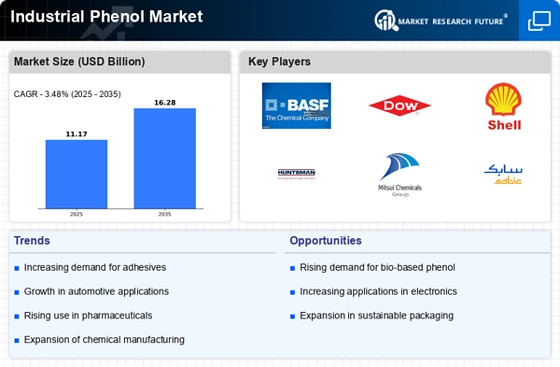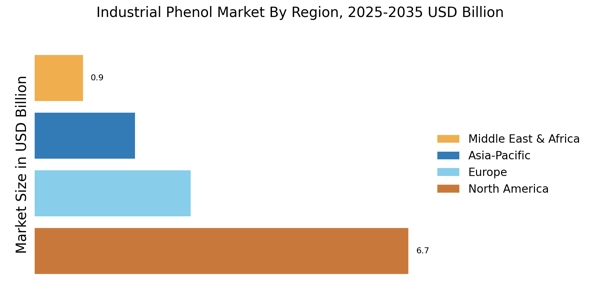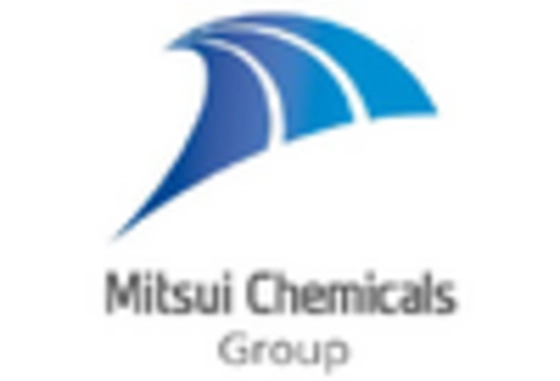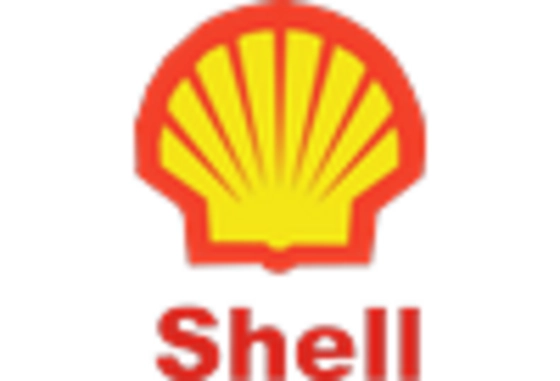Expansion of Emerging Markets
The Industrial Phenol Market is poised for growth due to the expansion of emerging markets, particularly in Asia-Pacific and Latin America. Rapid industrialization and urbanization in these regions are driving the demand for phenolic compounds in construction, automotive, and consumer goods. For instance, the Asia-Pacific region is projected to account for over 40% of the global phenol consumption by 2026, fueled by increasing investments in infrastructure and manufacturing. This trend indicates a substantial opportunity for the Industrial Phenol Market to capitalize on the burgeoning demand in these markets, fostering long-term growth and profitability.
Rising Demand in End-User Industries
The Industrial Phenol Market experiences a notable surge in demand driven by its extensive applications in various end-user sectors, including automotive, construction, and pharmaceuticals. As industries increasingly prioritize high-performance materials, phenol's role as a key ingredient in the production of resins, adhesives, and coatings becomes more pronounced. For instance, the automotive sector's growth, projected to expand at a compound annual growth rate of approximately 4% over the next few years, significantly contributes to the rising consumption of phenolic resins. This trend indicates a robust market potential for the Industrial Phenol Market, as manufacturers seek to enhance product durability and performance.
Innovations in Production Technologies
Technological advancements play a crucial role in shaping the Industrial Phenol Market. Innovations in production processes, such as the development of more efficient catalytic methods, are likely to enhance yield and reduce production costs. Recent studies indicate that new technologies could potentially increase phenol production efficiency by up to 20%. This improvement not only meets the growing demand but also aligns with sustainability goals by minimizing waste and energy consumption. As manufacturers adopt these cutting-edge technologies, the Industrial Phenol Market is poised for significant growth, attracting investments and fostering competitive advantages.
Increasing Focus on Sustainable Products
The Industrial Phenol Market is witnessing a paradigm shift towards sustainability, driven by consumer preferences for eco-friendly products. As industries strive to reduce their carbon footprint, the demand for bio-based phenol alternatives is likely to rise. This shift is evident in the growing interest in phenolic compounds derived from renewable resources, which could potentially capture a significant market share. Reports suggest that the market for bio-based phenol could grow at a rate of 5% annually, reflecting a broader trend towards sustainable manufacturing practices. Consequently, the Industrial Phenol Market must adapt to these changing dynamics to remain competitive.
Regulatory Support for Chemical Manufacturing
The Industrial Phenol Market benefits from favorable regulatory frameworks that promote chemical manufacturing. Governments are increasingly recognizing the importance of the chemical sector in economic development and job creation. Initiatives aimed at streamlining regulations and providing incentives for sustainable practices are likely to bolster production capacities. For example, policies encouraging the use of eco-friendly chemicals may lead to increased investments in phenol production technologies. This regulatory support not only enhances the operational landscape for manufacturers but also positions the Industrial Phenol Market as a vital contributor to sustainable industrial practices.


















Leave a Comment